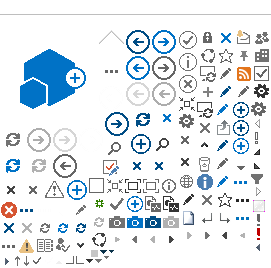Construction is the largest sector in workers compensation by premium and any changes to claims frequency will impact the entire workers comp market.
The overall workers compensation system is healthy and strong. To help stakeholders better understand the types of drivers and trends that underly overall workers comp industry results, the National Council on Compensation Insurance (NCCI) is now offering a new series of industry-level trend analyses and insights to look at at premium share, frequency, and employment levels by industry.
For example, construction claims frequency has declined an average of 4.1% annually from 2015-2023, compared to 2.6% on average across all industries, according to the NCCI analysis. Within the construction industry, claims of $500,000 and more decreased annually by 3.1% from 2015 to 2023. Further, claims of $100,000 to $500,000 decreased by 4.1% on average annually. As construction is the largest sector in workers comp by premium, the changes in frequency of claims impact the workers comp system as a whole.
The NCCI also found that claims frequency has been declining across all sizes of construction businesses. While small businesses—defined as businesses with policies less than $50,000 in premium—has a higher claims frequency in construction than large businesses, the frequency is decreasing at a faster pace. Small businesses have seen an average annual frequency decrease of 5.3%, compared to a 3.7% annual decrease for large businesses with policies $250,000 or more in premium.
Within the construction sector, slips or falls and strains are injury types with the largest share of claims. Both injury types are declining, with claims relating to strains experiencing a decline of 7% in accident year 2023. When claims are segmented by the part of the body injured, lower back injuries are declining the most over the last several years. This is not surprising because lower back injuries are often caused by strains.
Trend Drivers: Safety Improvements and the Labor Market
While the inherent high risks in construction can make it a complex industry for carriers to manage, a stronger focus on safety in the construction industry may be driving this downward trend in claims.
While the focus on safety is significant, it isn't the only factor determining frequency. Better training and oversight, increased automation of high-risk work, age of workers and even the weather can impact frequency.
Another dynamic at play is the role of the labor market. The construction industry experienced an employment gain of almost 3% annually over the last eight years and had higher employment growth than the all-industries combined view.
While job growth is associated with new, inexperienced workers who can negatively impact frequency, there is more to the story in the construction industry. Other than a greater emphasis on safety, another trend is leading to lower claim frequency: employee retention.
Around 2016, employment grew as companies were hiring, but layoffs were growing, too. During that time, the rate of layoffs outpaced the rate of workers who voluntarily quit their jobs.
However, unlike many other industries, employment levels in construction were not greatly impacted during the coronavirus pandemic. This is a stark contrast to the Great Recession, which heavily impacted construction workers due to the collapse of the housing market.
Comparatively, in 2020, both hires and separations decreased, causing a reduction in churn. This meant that fewer inexperienced workers have cycled into the workforce, putting further downward pressure on claim frequency.
Sandra Kipust is a senior practice leader and actuary at the National Council on Compensation Insurance (NCCI).
This article was originally published in the NCCI's Industry Drill Down series. For more detailed information about industry trends, tune in to the “State of the Line Podcast."
This article is provided solely as a reference tool to be used for informational purposes only. The information in this article shall not be construed or interpreted as providing legal or any other advice. Use of this article for any purpose other than as set forth herein is strictly prohibited.
